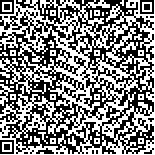|
|
|
| |
|
|
| 本文已被:浏览 2563次 下载 667次 |

码上扫一扫! |
|
|
| 日本蟳(Charybdis japonica)微卫星位点的分离及遗传多样性分析 |
|
叶 茂, 申 望, 王日昕, 郑兆祥, 石 戈
|
|
浙江海洋学院海洋科学学院 海洋生物资源及分子工程实验室
|
|
| 摘要: |
| 采用磁珠富集法, 以生物素标记的(CA)12 寡核苷酸为探针, 构建了日本蟳基因组微卫星富集文库。通过 PCR 法从文库中共筛选出 89 个微卫星位点, 其中完全型(perfect)共 75 个, 占 84.27%; 不完全型(imperfect)12 个, 占 13.48%; 复合型(compound)2 个, 占 2.25%。根据微卫星位点的侧翼序列, 设计筛选出 9 对具有稳定多态性的微卫星引物, 引物荧光标记后对日本蟳舟山群体进行遗传多样性分析。结果表明, 9 个微卫星位点的等位基因数为 12—25; 观察杂合度和期望杂合度分别为0.5806—0.9032 和 0.8383—0.9449; 9 个微卫星位点的 PIC 值为 0.8092—0.9259。本研究筛选的 9 个微卫星位点可作为日本蟳遗传多样性、种群遗传结构等研究的理想分子标记。
|
| 关键词: 日本蟳, 微卫星, 磁珠富集法, 遗传多样性 |
| DOI:10.11693/hyhz201101013013 |
| 分类号: |
| 基金项目:海洋渔业科学与技术浙江省重中之重学科开放课题资助, 20100205 号; 浙江省自然科学基金项目, Y3080292 号 |
|
| ISOLATION AND GENETIC DIVERSITY OF MICROSATELLITE LOCI IN ASIAN PADDLE CRAB CHARYBDIS JAPONICA |
|
YE Mao, SHEN Wang, WANG Ri-Xin, ZHENG Zhao-Xiang, SHI Ge
|
|
Laboratory of Marine Biology Resources and Molecular Engineering, Ocean Science College, Zhejiang Ocean University
|
| Abstract: |
| To isolate and identify polymorphic microsatellite markers which would be suitable for evaluating the genetic diversity and population genetic structure of Charybdis japonica, an enriched microsatellite library of C. japonica had been constructed by a magnetic-bead enrichment method used biotinylated (CA)12 probe. Screening the enriched microsatellite library by PCR technique, 89 microsatellite sequences were obtained. Among these microsatellite sequences, the numbers of perfect, imperfect and compound sequences were 75 (84.27%), 12 (13.48%) and 2 (2.25%), respectively. To analyze genomic DNA diversity of C. japonica, 9 pairs of polymorphic primers were designed and labeled by fluorophore. Allelic variation and other characteristics at these loci were examined in C. japonica population collected from Zhoushan sea area, China. The number of alleles per locus ranged from 12 to 25; the observed and expected heterozygosity varied from 0.5806 to 0.9032 and from 0.8383 to 0.9449, respectively; polymorphism information content (PIC) ranged form 0.8092 to 0.9259. These results showed that these microsatellite loci would be useful for studies of population genetics, stock management and other relevant research in C. japonica.
|
| Key words: Charybdis japonica, Microsatellite, Magnetic-bead enrichment method, Genetic diversity |
|
|
|
|
|
|
